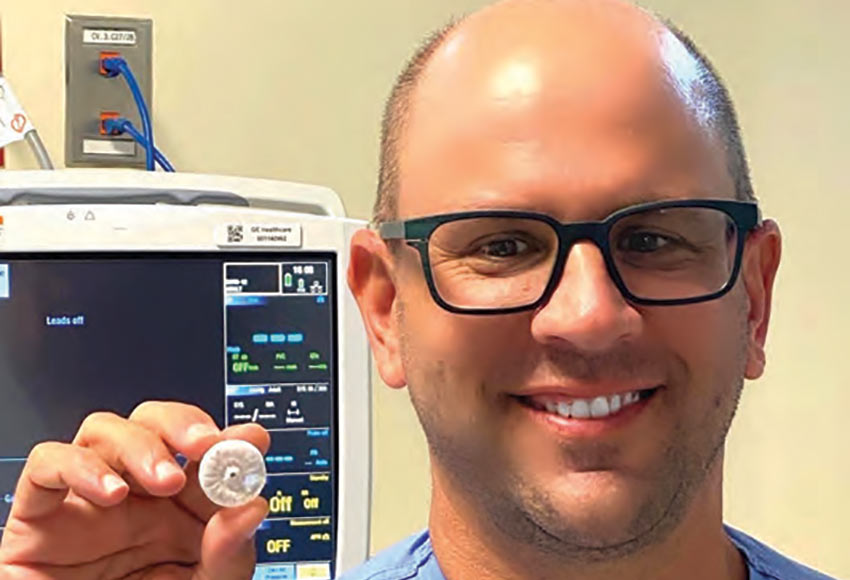Electrophysiologist Darren Sidney, M.D., with Charleston Heart Specialists, became South Carolina’s first physician to implant a next-generation device to reduce the risk of stroke for patients with atrial fibrillation.
The left atrial appendage occlusion device can effectively reduce the risk of stroke and eliminate the need for blood thinners. This permanent implant is for people with atrial fibrillation not caused by a heart valve problem who need an alternative to blood thinners. The device is about the size of a quarter and made from very light and compact materials commonly used in many other medical implants.
Electrophysiologist Frank Cuoco, M.D., practices with Dr. Sidney at Charleston Heart Specialists. They have each performed more than 100 LAAC procedures using an earlier version of the implantable device.
According to Dr. Sidney, atrial fibrillation affects 4 million to 5 million people a year, and its incidence is increasing, perhaps due to more aggressive monitoring.
He said, “It starts off with what we call paroxysmal, where it comes and goes and without treatment. It progresses to episodes lasting longer and more frequently until the patient is in it 100%, known as permanent atrial fibrillation. Most of our efforts are to prevent the progression of atrial fibrillation to permanent atrial fibrillation.”
“Atrial fibrillation mostly affects older people, and the incidence goes up with age, but we have seen people as young as 18 with it. Gender is not really a factor, but some of the underlying health conditions that contribute to atrial fibrillation include diabetes, hypertension, sleep apnea and obesity,” he added.
Dr. Sidney noted that sleep apnea is a common contributing factor that is somewhat treatable, but, even when sleep apnea and all the other risk factors are addressed, people can still see their atrial fibrillation progress.
“Risk factor modification is important but not the only way we treat atrial fibrillation,” Dr. Sidney explained.
Dr. Cuoco said new technology allows physicians to know when they have “good contact with the tissue,” decreasing procedure time and safety with the left atrial appendage occlusion device.
“It allows for more durable results, and the imaging has become so accurate, we can do this with little or no fluoroscopy. We have hybrid procedures with the surgeons for certain patients. Early detection is essential. The earlier we treat, the better. We have been involved in clinical trials for new catheters and modalities for ablating,” Dr. Cuoco said.
According to Dr. Sidney, 90% of clots and thrombi come from the left atrial appendage in atrial fibrillation.
“By using the LAAC device, theoretically, if we can exclude that part of the heart from the rest of the heart, we should be able to reduce the risk for stroke without the need for anticoagulation,” said Dr. Sidney.
The LAAC device is used with anesthesia through the leg “and we deploy a device that occludes the left atrial appendage,” Dr. Cuoco explained. “This can be done surgically as well. We also implant loop recorders – a small device about the size of a paper clip – in the chest that monitors the heart for three years or so to allow us to make the diagnosis of atrial fibrillation and determine whether anticoagulation is appropriate. This, too, helps reduce the risk for stroke.”







